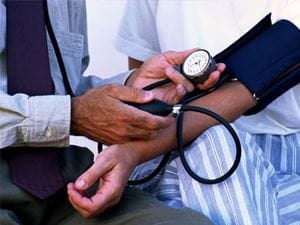
Everyone knows someone that has blood pressure issues – whether it be themselves, a relative or close friend. Blood pressure is a condition in which the force of the blood against the artery walls is too high or low. In nine out of ten cases, the condition is treatable by a medical professional. Physicians will generally run lab tests to help conclude whether or not the blood pressure issue is consistent or not. Based on the results of your tests, a doctor will identify whether or not the condition warrants medication, a lifestyle adjustment or perhaps both. Unfortunately, blood pressure issues are very common. In fact more than three million U.S. cases are identified each year.
Since blood pressure concerns are such a common issue, it’s important that the general public stay knowledgeable on the condition.
Sodium Levels
Believe it or not too, not having enough sodium in your diet can cause high blood pressure. As a child your parents probably harped on the bad effects of too much salt. Well they weren’t entirely wrong however, if a person doesn’t have enough sodium within their daily intake then they can develop blood pressure issues.
For heart failure patients, restricting salt intake to 1.8 grams a day can cause blood pressure to soar through the roof. Instead patients should strive to get no more than 2.8 mg a day and pay attention to labels. Foods like canned soups pickles and nuts are commonly known to have hidden salts.
Potassium
If you suffer from high blood pressure than you make sure that you’re eating foods rich in potassium. Many people do not know this, but potassium helps relax the arterial walls and maintains blood pressure within a healthy range. Foods that are high in potassium include but are not limited to eggplant, squash, bananas, coconut water, and baked potatoes.
Accurate Testing
A lot of doctors fail to take an accurate blood pressure measurement. Keep in mind that your position during a test will make all of the difference and provide a false result if not properly administered. Do not talk because talking can cause your numbers to rise. Try to relax. When sitting down for the test make sure that your legs are not dangling over an exam table. A patient should be seated with back support, the bare arm should be rested on the table, feet should be planted on the floor, and the stethoscope (or sensor) should be over the brachial artery – for those who don’t know is at the inside of the bend of your elbow where a pulse can usually be detected.
Both Arms
When going through the testing motions, a doctor should check both arms because there can be a variance in the results. The doctor should keep track of both arms throughout the duration of your visits. And blood should be taken exactly the same way. The best blood pressure reading is an hour after awakening, before you’ve had breakfast.
Pressure Going Up
There are many factors that can contribute to an individual’s pressure rising. Salt intake and genetic factors are all valid explanations for rising pressure. Secondary high blood pressure is generally caused by another condition such as renal hypertension, tumors, or other conditions. If you’re concerned about your blood pressure or have a family history of the condition it’s important to consult your doctor.
Blood pressure is not something that should be taken lightly. It’s very important to stay on top of any concerns that you may have and discuss them with your doctor. If your family member or friend is having issues, be sure to offer up advice and assistance in meal preparation or lifestyle adjustments. Even though the condition is a relatively common medical issue, that doesn’t mean patients should take it lightly. Be sure to consult your physician or dietician with any concerns you may have and allow them to help you construct a plan that will help you combat any issues you may have.

